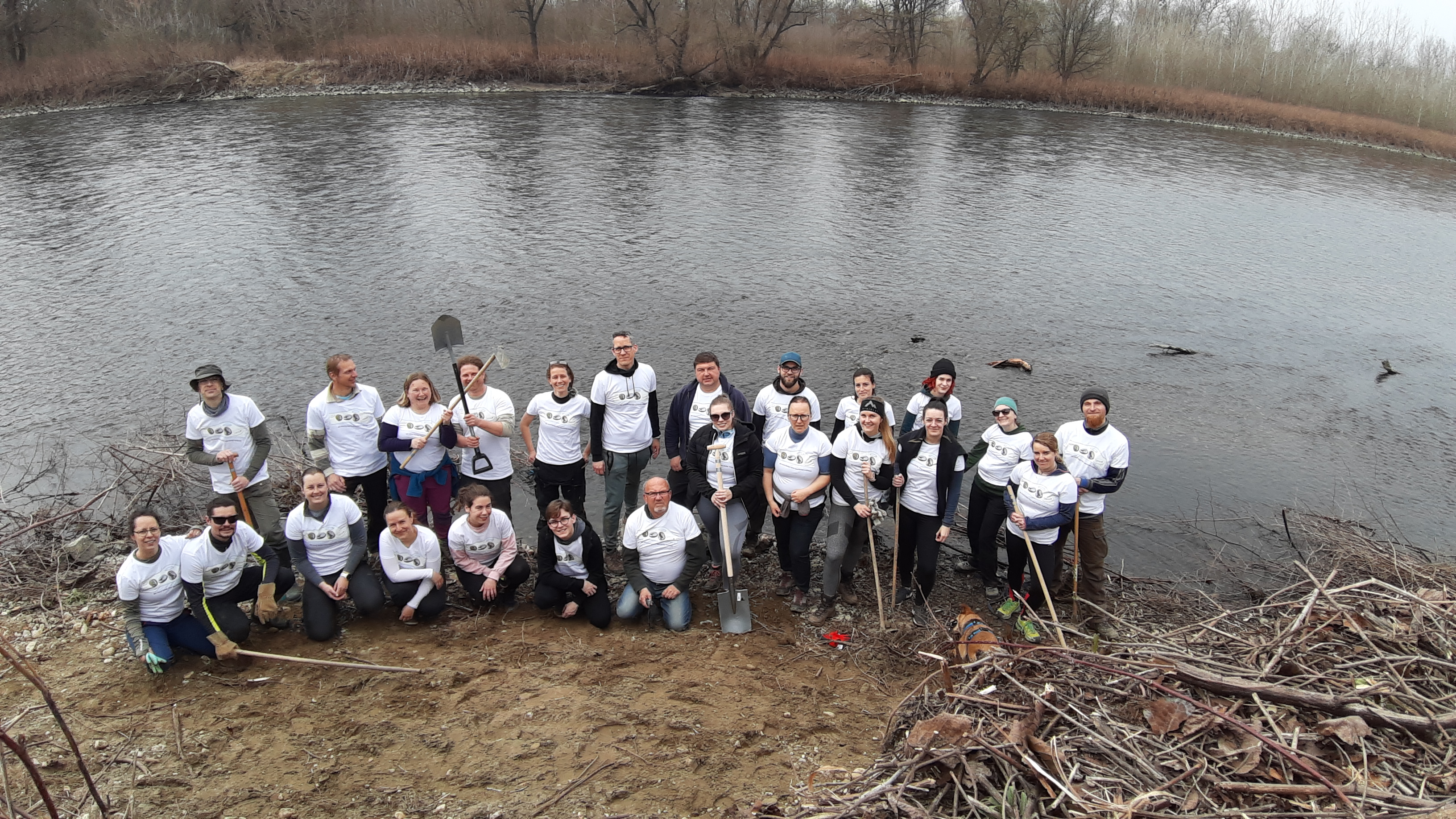lifelineMDD - Breeding site preparation for sand martins on the Mura river in Slovenia
21-03-2022
Sand martins (Riparia riparia) are one of the characteristic bird species in the UNESCO 5-country Biosphere Reserve Mura-Drava-Danube. As the smallest among European swallows and martins, they nest in large colonies in steep sandy banks near larger bodies of water, such as rivers, streams, and lakes. In order to provide them with a nesting place, project partner IRSNC organized a successful volunteer action on March 19, on the Mura River in Slovenia.
The loss of their breeding sites is one of the main reasons for the decrease of the population in the area of the TBR MDD. Human activities, such as river regulation, are one of the most important threats for them. The lack of natural breeding and periodical erosion on the sites caused the increase of artificial breeding sites, such as excavation sites and gravel pits, which caused a decline in the number of colonies.
Only a few colonies of sand martins can be found on the Mura River in Slovenia, given the absence of periodical erosion and overgrowth of steep banks with invasive species, especially Japanese knotweed and Himalayan balsam. The loss of appropriate breeding sites along the Mura River in Slovenia was therefore one of the main reasons to organize the volunteering action for this special bird.
IRSNC with the partner DOPPS – BirdLife Slovenia, gathered 25 volunteers that cleaned almost 100 meters of a steep bank and prepared the site for sand martins. Hopefully, they will soon arrive from Africa and find their place in the new steep bank!
This is just the beginning of volunteering actions within the lifelineMDD project that will contribute to the conservation of important and rare species that inhabit our amazing Biosphere Reserve.
Photo: IRSNC

